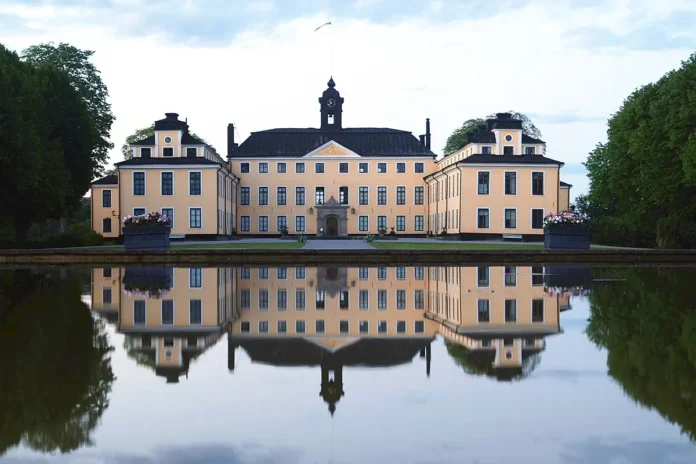A historic royal residence with a rich history, Ulriksdal Palace is situated in the Royal National City Park in Solna, about 6 km north of Stockholm. Originally constructed between 1638 and 1645 by architect Hans Jacob Kristler for Jacob De la Gardie, it was initially named Jacobsdal.
Royal significance
Ulriksdal Palace has been closely associated with several Swedish monarchs. In 1650, it served as the starting point for Queen Kristina‘s coronation procession, highlighting its early importance in Swedish history.
In 1669, Queen Dowager Hedvig Eleonora purchased the palace and renamed it Ulriksdal in 1684 after her grandson Prince Ulrik. The palace was a royal residence during the reigns of King Adolf Fredrik and Queen Lovisa Ulrika, who introduced significant cultural elements, including the establishment of the Confidencen Theatre.
In 1821, it transitioned to serve as a military hospital before eventually returning to royal use. Disabled veterans from the Finnish War were allowed to reside at the castle (the Finnish War of 1808-1809 was fought between Sweden and the Russian Empire).
Architectural evolution
The palace has undergone numerous transformations. Initially built in the Late Renaissance style, it was later influenced by architects such as Jean de la Vallée, Nicodemus Tessin the Elder, and Carl Hårleman. Notable elements like the mansard roof, which Hårleman added, give it its current appearance, which dates from the 18th century.
Notable features
- The Confidencen Theatre is the oldest Rococo theater in Sweden, having been founded in the 1750s by Queen Lovisa Ulrika. Designed by Carl Hårleman and Carl Fredrik Adelcrantz, it reflects the queen’s desire to enrich the cultural life of the Swedish court.
- 1923 Living Room: Designed by Carl Malmsten, this room is one of Sweden’s finest 20th-century interiors. It was a wedding gift to King Gustaf VI Adolf and Queen Louise from the people of Stockholm.
- The Orangery: Commissioned by Queen Hedvig Eleonora and built by Nicodemus Tessin the Younger, it now serves as a museum showcasing Swedish sculpture. It houses parts of the National Museum’s sculpture collection, featuring works by renowned sculptors such as Johan Tobias Sergel and Carl Milles.
Why visit Ulriksdal Palace?
Ulriksdal Palace offers a unique journey through Swedish royal history, architectural evolution, and cultural heritage. Visitors can explore:
- Architectural diversity: interiors spanning from the 1600s to the 1900s.
- The Orangery Museum: Featuring Swedish sculptures and Mediterranean flora.
- Confidencen Theatre: Sweden’s oldest Rococo theater.
- Royal apartments, including the exquisite 1923 Carl Malmsten-designed drawing room.
- Scenic Park: A meticulously designed landscape evolving over centuries.














